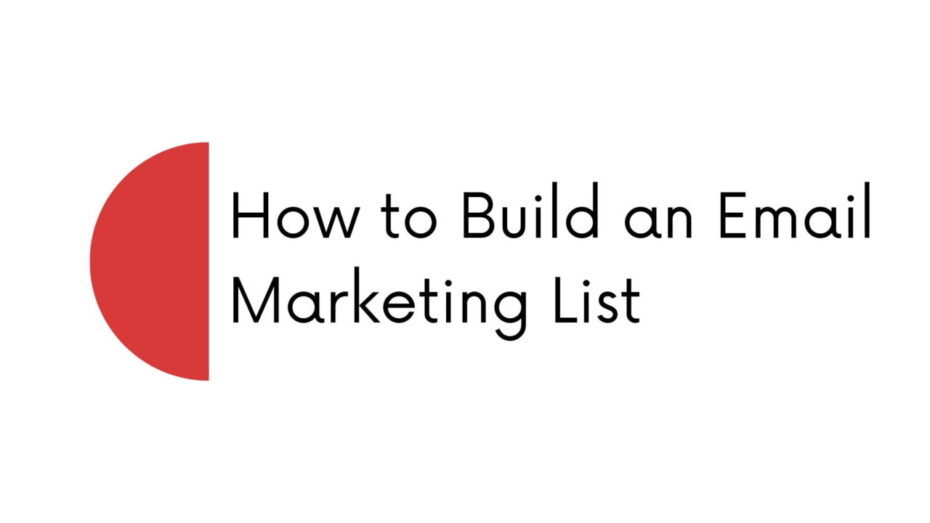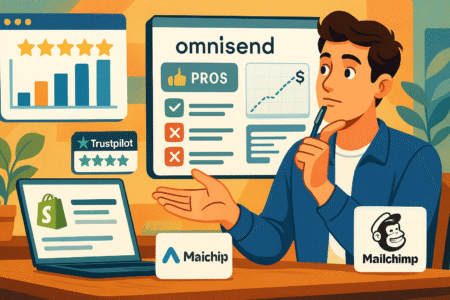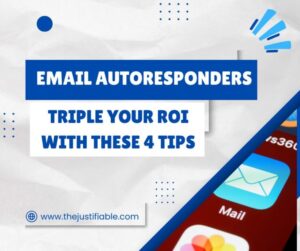Table of Contents
Building an email marketing list is crucial for effective marketing. This guide explores both paid and free methods to grow your email list, ensuring you can reach your target audience effectively.
Understanding the Basics of an Email Marketing List
Building an email marketing list is essential for any business looking to establish a direct line of communication with their customers. An email marketing list allows you to reach your audience with personalized messages, promotional offers, and valuable content. This helps to build trust and loyalty over time, which can lead to increased sales and customer retention.
Creating an email marketing list involves collecting email addresses from people who have expressed interest in your business. This can be done through various methods, both paid and free, ensuring you have a comprehensive and effective strategy to grow your list.
Email Marketing Recommendations
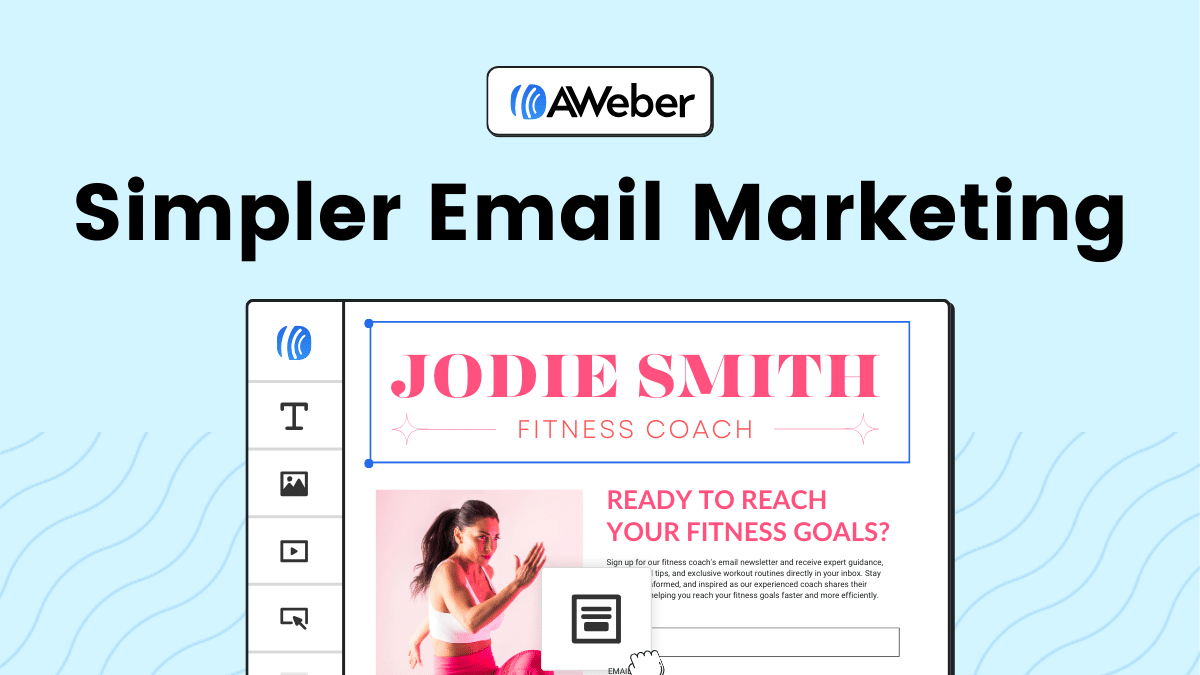 Aweber
| 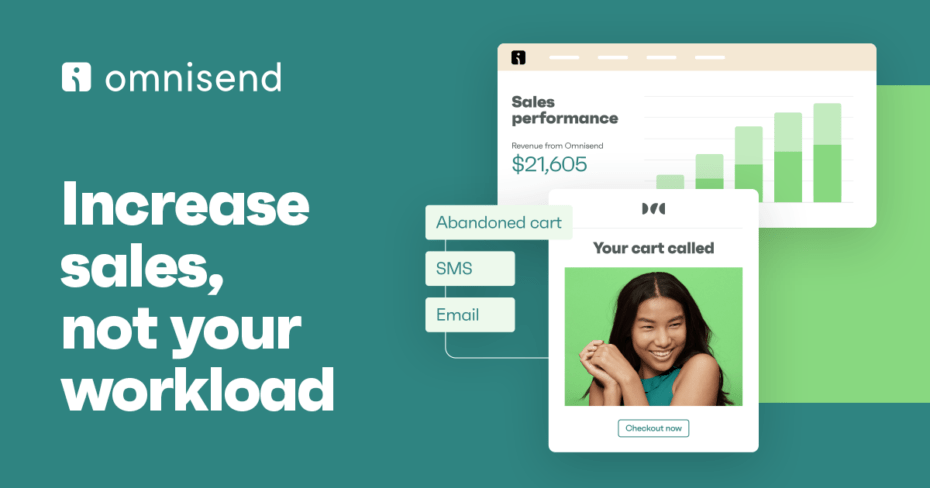 Omnisend
| 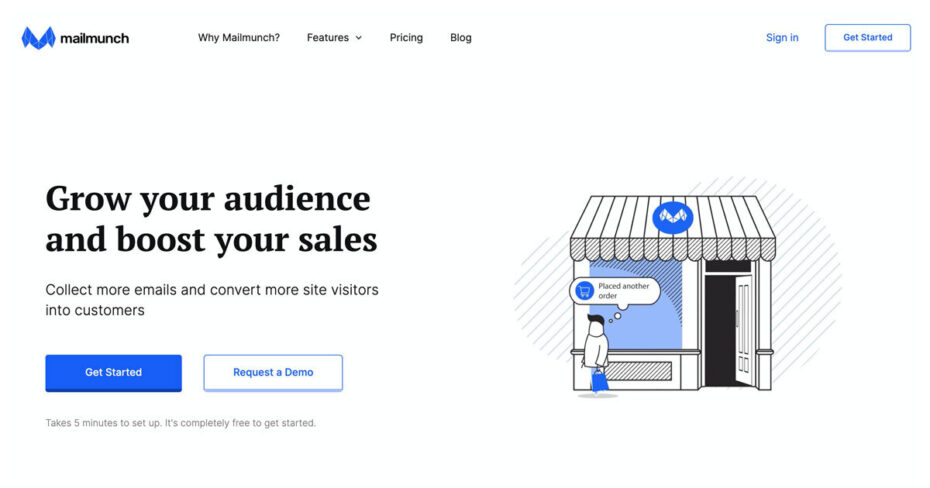 Mailmunch
|
What is an Email Marketing List?
An email marketing list is a collection of email addresses gathered from individuals who have opted to receive updates, promotions, and other content from your business. This list is a crucial asset for any marketing strategy, as it provides a direct channel to communicate with your potential and existing customers.
Building an email marketing list can be done through multiple channels. You might gather addresses from sign-up forms on your website, social media campaigns, or even during in-person events. Most importantly, I suggest always ensuring that you have permission to email these individuals to comply with regulations and maintain trust.
The quality of your email marketing list is vital. I recommend focusing on obtaining email addresses from people genuinely interested in your content. This approach leads to higher engagement rates and better overall performance of your email campaigns.
I believe that maintaining the health of your email list is just as important as building it. Regularly cleaning your list by removing inactive subscribers helps to improve deliverability and open rates, ensuring your messages reach the most interested recipients.
Why Every Business Needs an Email Marketing List
Every business, regardless of size or industry, can benefit from having an email marketing list. This list allows you to send targeted messages directly to your audience, which can significantly boost engagement and conversion rates. My suggestion is to view your email list as a long-term investment in customer relationships.
With an email marketing list, you have the power to segment your audience based on various criteria such as purchase history, demographics, and engagement levels. This segmentation allows you to tailor your messages to specific groups, increasing the relevance and effectiveness of your campaigns. I strongly believe this personalized approach can lead to higher customer satisfaction and loyalty.
Moreover, an email marketing list gives you control over your communication channels. Unlike social media platforms where algorithms determine the reach of your posts, emails land directly in your subscribers’ inboxes. I recommend taking advantage of this direct access to keep your audience informed about new products, special offers, and company updates.
Finally, an email marketing list is a cost-effective marketing tool. Compared to other advertising methods, email marketing offers a high return on investment. My advice is to consistently nurture your list with valuable content, keeping your brand top-of-mind for your subscribers, and ultimately driving more sales and growth for your business.
Free Methods to Build Your Email Marketing List
Building an email marketing list doesn’t have to break the bank. There are numerous free strategies that you can implement to grow your email marketing list effectively. By utilizing these methods, you can reach a broader audience without incurring significant costs, which is ideal for businesses on a budget.
Free methods are often just as effective as paid ones when executed correctly. Most importantly, I suggest focusing on providing value to your potential subscribers. This can be achieved through engaging content, user-friendly sign-up forms, and strategic use of social media platforms.
Leverage Social Media Platforms
Social media platforms are a powerful tool for growing your email marketing list. By sharing valuable content and engaging with your audience, you can encourage more people to join your list. I believe that social media provides a unique opportunity to connect with potential subscribers who are already interested in your brand.
One effective strategy is to use call-to-action (CTA) buttons on your social media profiles. My recommendation is to include a link to your sign-up form in your bio and regularly promote it in your posts. This makes it easy for your followers to subscribe to your email marketing list.
Additionally, hosting giveaways or contests can be an excellent way to attract new subscribers. I suggest requiring participants to join your email list as part of the entry process. This not only grows your list but also increases engagement with your brand.
I advise consistently posting valuable and relevant content on your social media platforms. Sharing blog posts, infographics, and behind-the-scenes content can pique your audience’s interest and drive them to subscribe to your email marketing list for more information.
Optimize Your Website for Lead Generation
Your website is a critical asset for building your email marketing list. By optimizing it for lead generation, you can capture the interest of visitors and convert them into subscribers. I recommend implementing several tactics to make this process seamless.
Firstly, ensure that your sign-up forms are easily accessible. My suggestion is to place them in prominent locations such as the homepage, blog pages, and contact page. This visibility increases the likelihood that visitors will notice and complete the form.
Another effective tactic is to offer valuable incentives. I point out that free resources like eBooks, whitepapers, or exclusive discounts can entice visitors to subscribe to your email marketing list. These lead magnets should be relevant and provide genuine value to your audience.
I believe that using exit-intent pop-ups can significantly boost your subscription rates. These pop-ups appear when a visitor is about to leave your site, offering them a last-minute opportunity to join your email list. This strategy can capture potential subscribers who might otherwise leave without signing up.
Lastly, make sure your website is mobile-friendly. My recommendation is to ensure that your sign-up forms are easy to fill out on mobile devices, as a significant portion of web traffic comes from mobile users. A smooth mobile experience can lead to more conversions.
Create Engaging and Shareable Content
Creating engaging and shareable content is a powerful way to grow your email marketing list. By producing high-quality content that resonates with your audience, you can encourage them to share it with others, expanding your reach. I strongly believe that content marketing plays a crucial role in list building.
One approach is to write informative blog posts that address your audience’s pain points and interests. My advice is to include CTAs within your posts, inviting readers to join your email marketing list for more insights and updates.
Another strategy is to create visually appealing content such as infographics or videos. I suggest sharing these on social media and encouraging your audience to share them with their networks. This can help your content go viral, attracting more potential subscribers to your email marketing list.
Offering exclusive content to your email subscribers can also be a compelling incentive. I recommend promoting this exclusivity on your website and social media channels, highlighting the unique value that subscribers receive.
Finally, consider guest posting on popular blogs within your industry. I advise including a link to your sign-up form in your author bio, allowing you to tap into new audiences and grow your email marketing list.
Utilize Email Sign-Up Forms and Pop-Ups
Email sign-up forms and pop-ups are essential tools for building your email marketing list. When used strategically, they can significantly increase your subscription rates. I would say that optimizing these elements is crucial for capturing leads effectively.
Start by designing eye-catching sign-up forms that stand out on your website. My recommendation is to use compelling headlines and clear CTAs to attract visitors’ attention. The form should be simple and easy to complete, requiring minimal information from the user.
Pop-ups can be highly effective when used correctly. I suggest implementing timed pop-ups that appear after a visitor has spent a certain amount of time on your site. This ensures that the pop-up doesn’t interrupt their browsing experience prematurely.
Exit-intent pop-ups are another valuable tool. I point out that these pop-ups can capture the interest of visitors who are about to leave your site, offering them an incentive to subscribe to your email marketing list before they go.
Finally, consider using gamified pop-ups to engage your audience. I believe that interactive elements like spin-to-win wheels or quizzes can make the subscription process more enjoyable, increasing the likelihood that visitors will join your list.
Paid Strategies to Grow Your Email Marketing List
Investing in paid strategies can significantly accelerate the growth of your email marketing list. These methods can be highly effective, providing a substantial return on investment when executed correctly. I recommend considering a mix of paid tactics to maximize your reach and attract quality subscribers.
Paid strategies offer the advantage of targeted audience reach, allowing you to focus on individuals who are more likely to be interested in your content. My suggestion is to carefully plan and monitor your campaigns to ensure you are getting the best possible results from your investment.
Invest in Paid Social Media Campaigns
Paid social media campaigns are an excellent way to grow your email marketing list quickly. Platforms like Facebook, Instagram, and LinkedIn offer advanced targeting options to reach your ideal audience. I believe these campaigns can drive highly relevant traffic to your sign-up forms, boosting your subscription rates.
When setting up a paid social media campaign, I suggest creating compelling ad creatives that highlight the benefits of joining your email list. Use eye-catching visuals and strong CTAs to encourage clicks. Additionally, my recommendation is to offer an incentive, such as a free eBook or exclusive discount, to entice users to subscribe.
Targeting is crucial for the success of your campaign. I advise using demographic, interest, and behavior-based targeting to reach users who are most likely to be interested in your content. This ensures your ads are seen by the right people, improving your conversion rates.
Monitoring and optimizing your campaigns are essential. I point out that regularly reviewing your ad performance and making necessary adjustments can help you achieve better results. Focus on key metrics such as click-through rates and conversion rates to gauge the effectiveness of your campaigns.
Use Google Ads for Targeted Lead Generation
Google Ads can be a powerful tool for growing your email marketing list. By leveraging search and display ads, you can reach potential subscribers who are actively searching for information related to your business. I think this method allows for precise targeting, ensuring your ads are seen by individuals with a genuine interest in your content.
Creating effective Google Ads requires careful keyword selection. My suggestion is to focus on keywords that are relevant to your business and have a high search volume. This approach helps you attract quality traffic to your landing pages, where users can sign up for your email marketing list.
Landing page optimization is crucial for converting visitors into subscribers. I recommend designing a clean, user-friendly landing page with a clear value proposition and a prominent sign-up form. Ensure that the page loads quickly and is optimized for both desktop and mobile devices.
Tracking and analyzing your ad performance is vital. I advise using Google Analytics and conversion tracking to measure the effectiveness of your campaigns. This data can help you make informed decisions about where to allocate your budget and how to improve your ad strategies.
Partner with Influencers for List Building
Partnering with influencers can be an effective way to grow your email marketing list. Influencers have established audiences that trust their recommendations, which can help you reach new potential subscribers. I strongly believe this strategy can drive high-quality traffic to your sign-up forms.
When selecting influencers, I recommend choosing individuals who align with your brand and have an engaged following. This ensures that their audience is likely to be interested in your content. My suggestion is to collaborate on content that promotes your email list, such as sponsored posts, giveaways, or exclusive offers.
Clear communication and expectations are key to a successful partnership. I advise discussing the goals of the campaign and the type of content you would like the influencer to create. Providing them with guidelines and key messages can help ensure the content is effective and aligned with your brand.
Measuring the impact of your influencer campaigns is essential. I point out that tracking referral traffic and conversion rates from the influencer’s content can help you assess the success of the partnership. Use this data to refine your approach and optimize future collaborations.
Purchase High-Quality Email Lists Responsibly
Purchasing email lists can be a quick way to grow your email marketing list, but it must be done responsibly. Acquiring high-quality email lists from reputable sources ensures that you are reaching individuals who have given permission to be contacted. I recommend conducting thorough research before making a purchase.
When evaluating potential list providers, my suggestion is to check their reputation and the quality of their lists. Look for providers who offer opt-in lists, where subscribers have explicitly agreed to receive emails. This helps to maintain compliance with regulations and improves the likelihood of engagement.
Segmentation is important when using purchased lists. I advise dividing the list into smaller segments based on demographics or interests. This allows you to send more targeted and relevant content to each group, increasing the chances of successful engagement.
Monitoring the performance of your campaigns is crucial. I point out that tracking metrics such as open rates, click-through rates, and unsubscribe rates can help you evaluate the effectiveness of the purchased list. Use this information to make informed decisions about future list acquisitions and campaign strategies.
Best Practices for Maintaining Your Email Marketing List
Maintaining your email marketing list is essential for ensuring its effectiveness and longevity. A well-maintained list can significantly enhance your email marketing efforts, leading to higher engagement rates and better customer relationships. I believe that adopting best practices for list maintenance can make a substantial difference in your overall email marketing success.
By regularly cleaning and updating your list, segmenting it for targeted campaigns, implementing double opt-in, and monitoring engagement, you can keep your email marketing list in top condition. My suggestion is to follow these best practices consistently to achieve optimal results.
Regularly Clean and Update Your List
Regularly cleaning and updating your email marketing list is crucial for maintaining its health and effectiveness. Over time, email addresses can become outdated, and inactive subscribers can negatively impact your engagement rates. I recommend making it a routine practice to clean your list every few months.
Start by identifying and removing inactive subscribers. My advice is to look for email addresses that haven’t engaged with your emails for a certain period, such as six months. Sending a re-engagement campaign before removing them can give these subscribers a final chance to stay on your list.
Additionally, ensure that your list is free of invalid email addresses. I suggest using email verification tools to check for typos, inactive domains, and other issues. This helps to improve your deliverability rates and reduces the risk of your emails being marked as spam.
I believe it’s also important to update subscriber information regularly. Encourage your subscribers to update their preferences and contact details through a profile management page. This keeps your list accurate and allows for better personalization in your campaigns.
Segment Your List for Targeted Campaigns
Segmenting your email marketing list allows you to send more relevant and personalized content to your subscribers. This practice can lead to higher open rates, click-through rates, and overall engagement. I strongly believe in the power of segmentation for effective email marketing.
There are various ways to segment your list. I recommend starting with basic demographic information, such as age, gender, and location. This helps you tailor your messages to specific groups within your audience.
Behavioral segmentation is another effective approach. My suggestion is to segment your list based on past interactions with your emails, purchase history, and website behavior. This allows you to send targeted campaigns that resonate with each subscriber’s interests and actions.
Additionally, consider using psychographic segmentation. I advise gathering data on your subscribers’ interests, values, and lifestyles through surveys and preference centers. This deeper understanding of your audience enables you to create highly personalized and engaging content.
I point out that regular testing and analysis are key to successful segmentation. Monitor the performance of your segmented campaigns and adjust your strategies based on the results. This continuous optimization can help you achieve better outcomes over time.
Implement Double Opt-In for Quality Leads
Implementing a double opt-in process can significantly improve the quality of your email marketing list. This method requires subscribers to confirm their email address before being added to your list, ensuring that they genuinely want to receive your emails. I recommend using double opt-in to enhance your list quality and engagement rates.
The double opt-in process typically involves sending a confirmation email to new subscribers. I suggest including a clear and compelling call-to-action (CTA) in this email, prompting them to confirm their subscription. This extra step helps to verify the accuracy of the email address and confirm the subscriber’s interest.
One of the main benefits of double opt-in is reduced spam complaints. I believe that when subscribers explicitly confirm their interest, they are less likely to mark your emails as spam, improving your sender reputation and deliverability rates.
Additionally, double opt-in can lead to higher engagement rates. My recommendation is to use this process to ensure that your list consists of active and interested subscribers who are more likely to engage with your content. This can result in better performance for your email campaigns.
I point out that while double opt-in may result in fewer overall subscribers, the quality of your list will be higher. This trade-off is often worthwhile, as a smaller, more engaged list can be more effective than a larger, less interested one.
Monitor Engagement and Adjust Strategies
Monitoring engagement and adjusting your email marketing strategies accordingly is essential for long-term success. By keeping a close eye on key metrics, you can identify areas for improvement and optimize your campaigns for better results. I think that regular analysis and adjustment are crucial components of effective email marketing.
Start by tracking basic engagement metrics such as open rates, click-through rates, and conversion rates. My advice is to use these metrics to gauge the overall performance of your email campaigns and identify trends over time.
Pay attention to subscriber behavior and preferences. I suggest analyzing data on which types of content, subject lines, and sending times resonate most with your audience. This information can help you tailor your future campaigns to better meet their needs and interests.
Additionally, consider implementing A/B testing to refine your strategies. I recommend testing different elements of your emails, such as subject lines, CTAs, and design, to see what works best. Use the insights gained from these tests to continuously improve your campaigns.
I strongly believe that staying responsive to your audience’s feedback is vital. Encourage subscribers to provide feedback through surveys and direct responses. Use this feedback to make necessary adjustments and keep your email marketing list engaged and satisfied.
Tools and Resources to Manage Your Email Marketing List
Effectively managing your email marketing list requires the right tools and resources. With the proper platforms and plugins, you can optimize your list management processes, improve engagement, and drive better results. I recommend exploring various tools to find the ones that best suit your needs.
Using comprehensive email marketing platforms, essential plugins, and analytics tools can streamline your efforts. I advise focusing on solutions that offer robust features for list management, optimization, and performance tracking to maximize your email marketing success.
Top Email Marketing Platforms for List Management
Selecting the right email marketing platform is crucial for effective list management. These platforms offer a range of features to help you build, segment, and maintain your email marketing list. I recommend considering platforms like Mailchimp, Constant Contact, and ActiveCampaign for their comprehensive tools.
Mailchimp is a popular choice due to its user-friendly interface and powerful list management features. My suggestion is to use Mailchimp for creating segmented lists, automating campaigns, and analyzing performance. It’s a versatile platform that caters to businesses of all sizes.
Constant Contact is another excellent option, especially for small to medium-sized businesses. I believe it offers robust list management tools, easy-to-use templates, and detailed reporting. This platform helps you maintain your email marketing list and engage with your audience effectively.
ActiveCampaign is ideal for those looking for advanced automation and segmentation features. I advise using ActiveCampaign to create highly targeted campaigns based on subscriber behavior and preferences. Its comprehensive suite of tools makes it a strong choice for managing your email marketing list.
I point out that choosing the right platform depends on your specific needs and goals. Evaluate the features, pricing, and support options of each platform to determine which one aligns best with your email marketing strategy.
Essential Plugins and Add-ons for Optimization
To optimize your email marketing list, incorporating essential plugins and add-ons can enhance functionality and streamline processes. These tools can help you capture leads, segment your list, and integrate with other marketing platforms. My recommendation is to explore plugins and add-ons that complement your email marketing platform.
For WordPress users, the Mailchimp for WordPress plugin is a valuable tool. I suggest using this plugin to easily integrate Mailchimp with your website, allowing you to create sign-up forms and manage subscribers directly from your site.
OptinMonster is another powerful plugin that helps you capture leads and grow your email marketing list. I advise using OptinMonster to create eye-catching pop-ups, slide-ins, and other opt-in forms that encourage visitors to subscribe. Its advanced targeting and segmentation features can boost your list growth efforts.
Sumo is a comprehensive suite of tools designed to grow your email list and improve engagement. I believe that using Sumo can help you create high-converting sign-up forms, welcome mats, and smart bars. Its integration capabilities make it easy to sync with your email marketing platform.
I suggest exploring other plugins and add-ons that offer specific features you need, such as A/B testing, advanced segmentation, and real-time analytics. These tools can significantly enhance your email marketing list management and optimization efforts.
Analytics Tools to Track Performance
Tracking the performance of your email marketing campaigns is essential for continuous improvement. Analytics tools provide valuable insights into your campaigns’ effectiveness, helping you make data-driven decisions. I recommend using these tools to monitor key metrics and optimize your strategies.
Google Analytics is a must-have tool for tracking website traffic and user behavior. My suggestion is to integrate Google Analytics with your email marketing platform to measure the impact of your campaigns on website traffic and conversions. This comprehensive tool offers detailed reports and insights.
Another valuable tool is Litmus, which specializes in email analytics and testing. I believe using Litmus can help you analyze how your emails perform across different email clients and devices. Its advanced analytics features provide insights into open rates, click-through rates, and subscriber engagement.
Email marketing platforms like Mailchimp and ActiveCampaign also offer built-in analytics tools. I advise leveraging these tools to track campaign performance, subscriber behavior, and list growth. These platforms provide detailed reports that help you understand what works and what doesn’t.
I strongly believe that regularly monitoring your email marketing performance is crucial for success. Use these analytics tools to identify trends, measure engagement, and adjust your strategies accordingly. This continuous optimization can lead to better results and a more effective email marketing list.
Conclusion
Building and maintaining an effective email marketing list is a dynamic process that involves both free and paid strategies. By following the best practices and continuously optimizing your efforts, you can achieve significant growth in your email marketing success.


